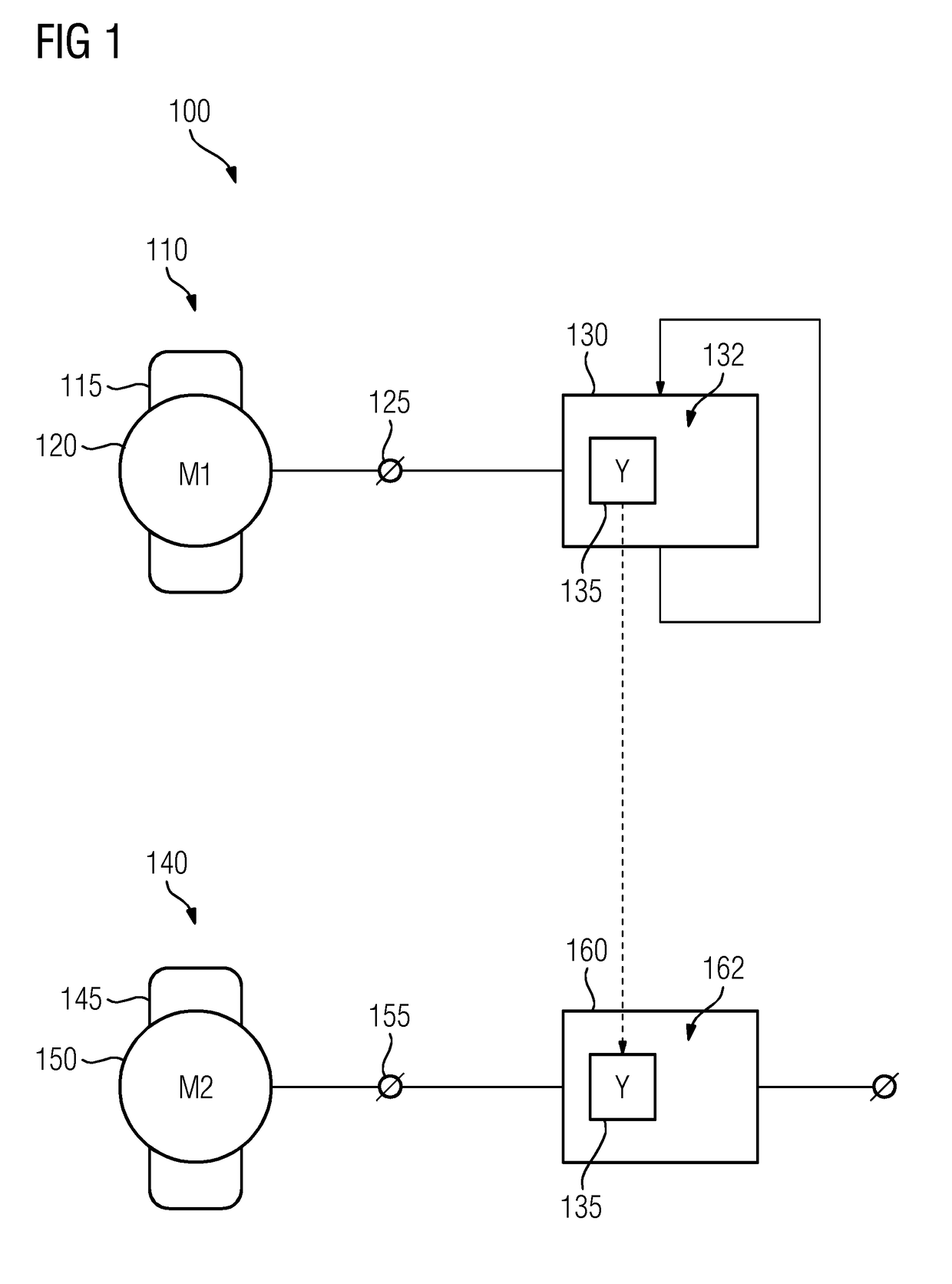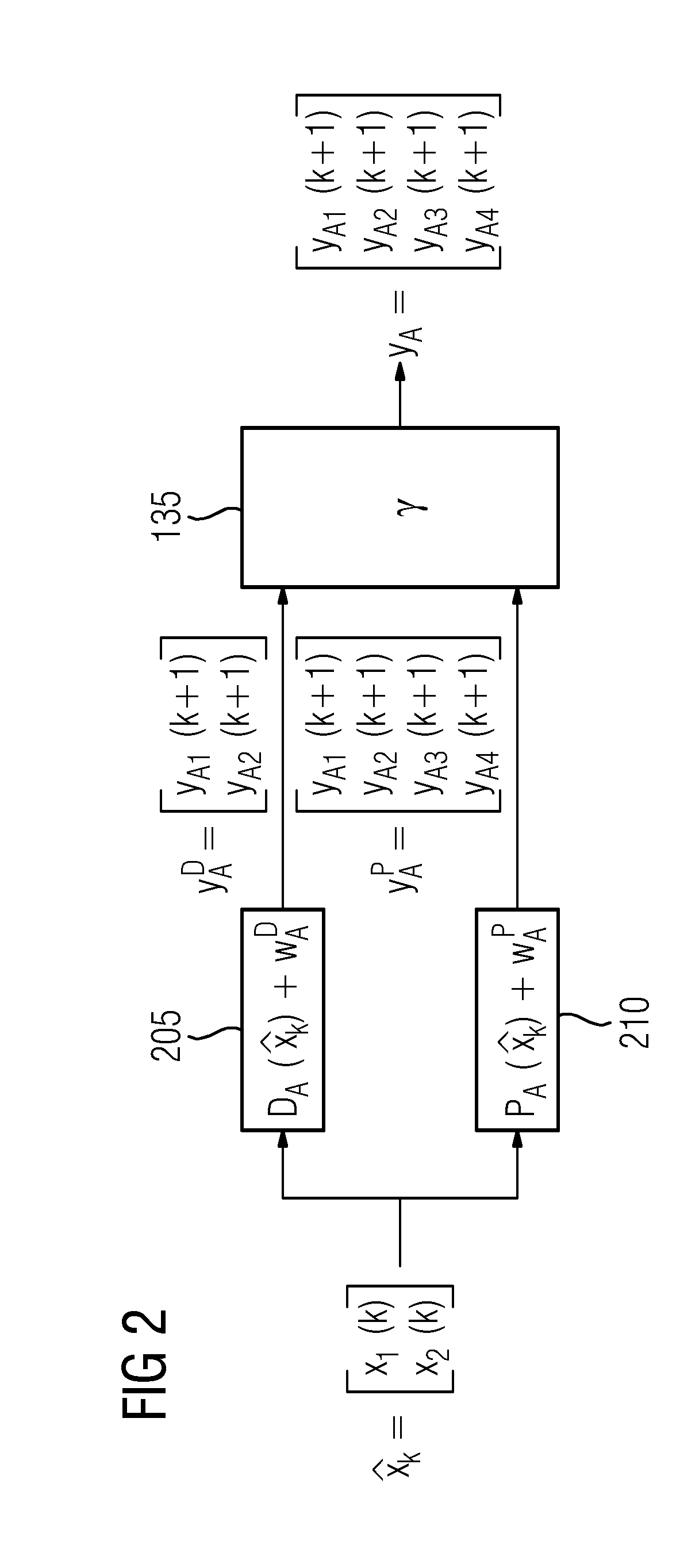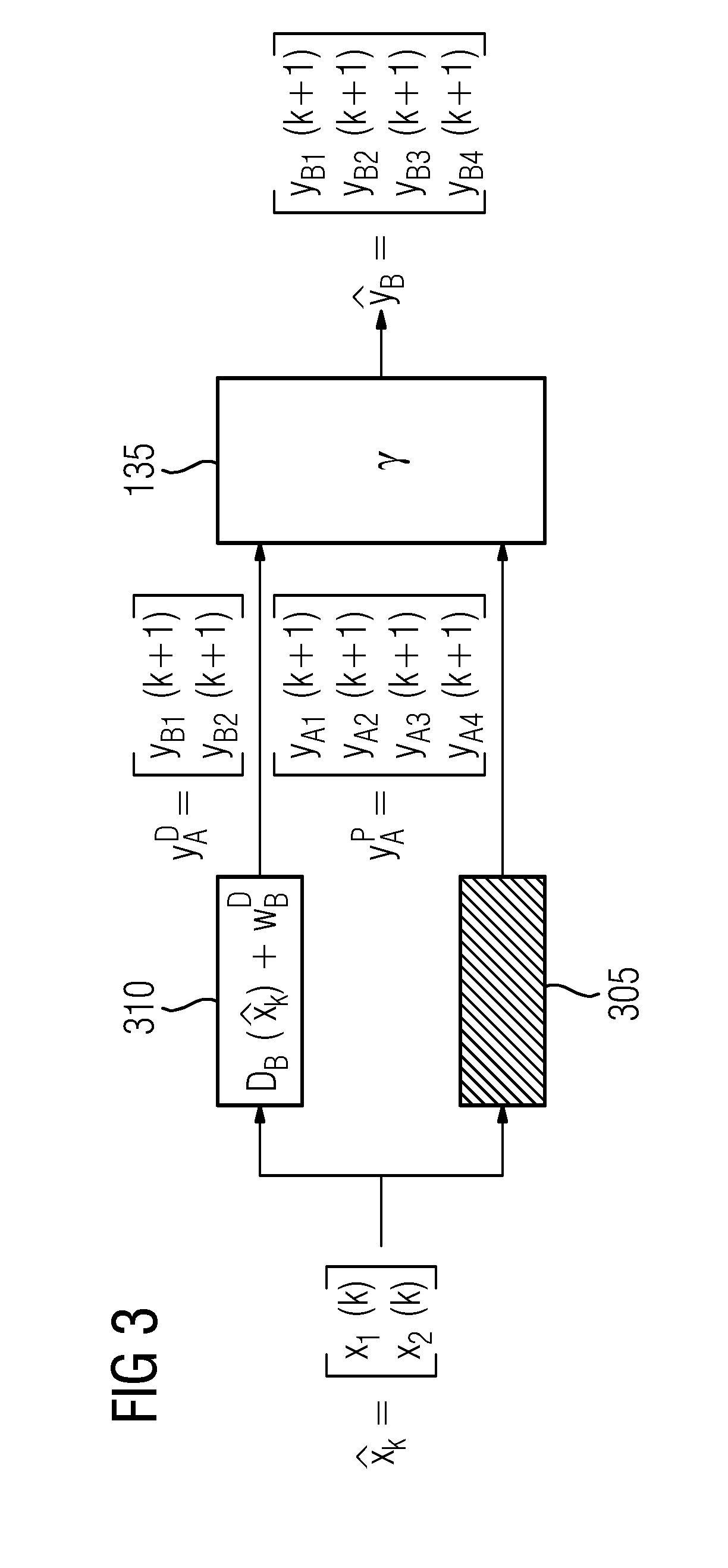System state prediction
a technology of system state and prediction method, applied in the field of system state prediction, can solve the problems of no sensor data, difficult scaling or applicable to fleets, and difficult to place sensors for direct temperature measurement at pole shoes in production devices, etc., to achieve accurate and reliable prediction of system behaviour and life time
- Summary
- Abstract
- Description
- Claims
- Application Information
AI Technical Summary
Benefits of technology
Problems solved by technology
Method used
Image
Examples
Embodiment Construction
[0027]FIG. 1 shows a schematic depiction 100 of two similar exemplary physical systems. A first system 110 and a second system 140 are each represented by exemplary asynchronous electric motors, although embodiments of the invention are not limited to electric machinery. The electric motor 110, 140 may be large drive motors for elevators, belt conveyors or sewage pumps, with a power declaration in the range of up to several 100 kW. The first motor 110 comprises a first stator 115 and a first rotor 120 and the second motor 140 comprises a second stator 145 and a second rotor 150.
[0028]The motors 110, 140 may be mass producible items which may come in different product lines and power declarations. The product lines may differ in the number of pole pairs the motor 110, 140 has. The motors 110, 140 are considered similar as long as they stem from the same motor design and differ only in product line and / or power declaration (i.e. size). When a motor 110, 140 is connected to a power sup...
PUM
 Login to View More
Login to View More Abstract
Description
Claims
Application Information
 Login to View More
Login to View More - R&D
- Intellectual Property
- Life Sciences
- Materials
- Tech Scout
- Unparalleled Data Quality
- Higher Quality Content
- 60% Fewer Hallucinations
Browse by: Latest US Patents, China's latest patents, Technical Efficacy Thesaurus, Application Domain, Technology Topic, Popular Technical Reports.
© 2025 PatSnap. All rights reserved.Legal|Privacy policy|Modern Slavery Act Transparency Statement|Sitemap|About US| Contact US: help@patsnap.com



